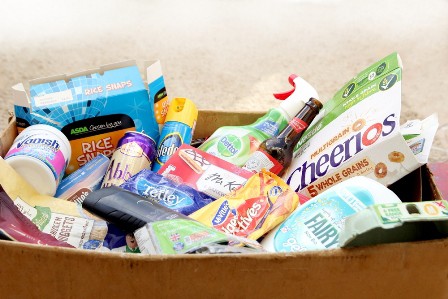The UK looks almost certain to meet its packaging waste recovery targets – including for plastics recycling – in 2017 according to the Environment Agency figures published earlier this month.
But, while broadly speaking the figures have been welcomed by the packaging compliance sector, concerns remain that targets for 2018 could be more difficult to achieve.
 The data shows that as of January 10, a total of 7,808,886 tonnes had been recorded as recovered which includes 7,129,059 tonnes of recycling.
The data shows that as of January 10, a total of 7,808,886 tonnes had been recorded as recovered which includes 7,129,059 tonnes of recycling.
The figures are not final as they are derived from voluntary submissions of data and so may not be complete. They are submitted by reprocessors and recyclers to the National Packaging Waste Database which is run by the Environment Agency.
Comparing the numbers to the obligation for recovery of packaging waste in the UK (which includes recycling and energy recovery) it looks like the obligation has almost been achieved.
As of November 9 2017, Environment Agency data showed that the total recovery of packaging needed in terms of the obligation (the amount of packaging the UK needs to recover) was 7,869,580 million tonnes which includes 7.2 million tonnes of recycling (see letsrecycle.com story) .
Using the January 10 figures, this means that about 60,000 tonnes more of recycling was needed to meet the targets which is widely as seen as achievable and likely to be seen in final figures expected in March 2018.
Perspectives from the sector are broadly that there is little chance of a failure to meet targets in 2017 but that 2018 could be more challenging for some streams, notably for wood, plastics and glass aggregate. Plus some observers felt that there would be less carry over of 2017 PRNs for some materials into January 2018 when they can be used towards 2018 targets.
Tension
Angus Macpherson, chief executive of the Environment Exchange, said “While one doesn’t read too much into these figures as they are voluntary, it looks as though the target will be reached although by not as much as in previous years. However, there is clearly tension in the plastics recycling stream and it is also looking tight for glass.”
Surplus
Phil Conran, chair of the Advisory Committee on Packaging, commented that the monthly data published on 10th January indicates that for all materials, there will be a surplus of recycling for 2017 in relation to the packaging targets.
Mr Conran continued: “However, with a total 2017 recycling obligation of 7.322m tonnes and the incomplete data showing 7.13 tonnes, there is a danger that if there is significant carry forward of December PRNs, there may be some who are unable to meet their overall recycling obligation. PRN trading prices do not seem to support that at the moment and we wait to see the final position, but this might suggest that on top of all the concerns caused by China’s import restrictions, there may be a significantly reduced benefit compared to normal carry forward levels of PRN.”

(clockwise from top left) Ian Andrews, PRN Trader; Phil Conran, chair of the ACP; Robbie Staniforth, Ecosurety; and Angus Macpherson, Environment Exchange/T2E
Glass
Also of a view that the 2017 targets would be met was Ian Andrews, director of PRN Trader, who noted that the figures “provide some indication of a positive return for the problematic 2017 materials.”
Mr Andrews continued: “Aggregate glass continue its struggle being saved only by the surplus created in Remelt. It should however be noted that it has had to use some of the 2017 carry in to see it over the line. Plastic recorded a strong quarter albeit potentially down on the previous quarter but the stronger 2018 prices appear to be provided enough security to the export market to continue its move towards new end markets.
“Wood dominated trading discussions this week with increased prices being recorded in both the 2017 and 2018 markets. 2017 obligations are currently being satisfied with transitional tonnage which has resulted in a lift in that price as these late buyers compete with nervous 2018 buyers.”
Future
Robbie Staniforth, policy manager at Ecosurety, said he was in agreement that the 2017 targets are likely to be met.
“I think the problem with us coming out and saying that all is going to be fine is not a good indication of the future. The feeling from our end is that we have in effect ‘got away with one here’, enough markets have opened up and not caused a huge issue but when it comes down to it the next few years could be more challenging.
“Certainly with targets increasing year on year, it always compounds that situation. The assumption is built in that there will always be more capacity, but if you take a step back the UK recycling level hasn’t increased and we are therefore over reliant on overseas markets which have got more difficult.”
Mr Andrews added that it would be good to see an increase in UK recycling, especially for plastics, as while where there were reports that new overseas markets had opened up it was unclear whether these were sustainable.
The post Packaging sector cautious despite likely 2017 target success appeared first on letsrecycle.com.